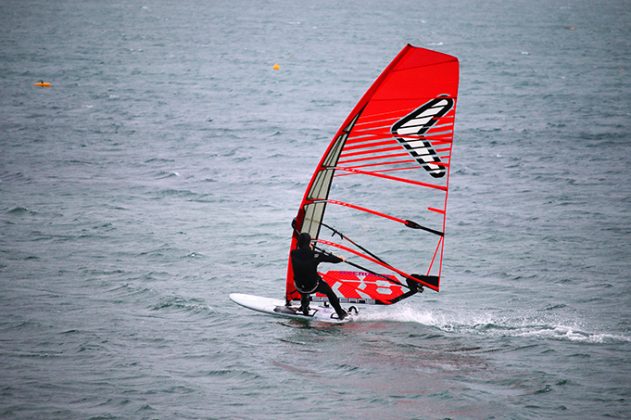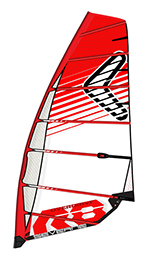
SEVERNE OVERDRIVE R8 7.8M 2017 TEST REVIEW
SEVERNE OVERDRIVE R8 7.8M 2017 TEST REVIEW
OVERVIEW
The OverDrive once again sits below the Reflex in Severne’s range, benefiting from the developments in the brand’s PWA-bound race sail (such as the Reflex batten system), whilst retaining a focus on ease of rigging and handling. Compatible on either an RDM or SDM mast (requiring an RDM cam conversion kit if opting for the skinny mast), it is tested here on an APEX 460 and has a clear link to its predecessor, displaying easily the least luff curve amongst this test group. The updates for the new season are a refined camber inducer design for SDM masts, to “allow minimal downhaul settings without risk of the cams popping off”, and a change in the sail’s draft position and twist profile to increase speed. It is a tall looking sail at first glance, possessing one of the larger luff lengths yet easily the shortest boom length in the group. There are two clew eyelets offered – the recommended higher position providing the opportunity for use of an adjustable outhaul, whilst the lower eyelet is said to be suited for lighter riders and higher winds. Nevertheless, both eyelets are placed relatively low in the sail’s outline. With a deep luff sleeve and the predominant use of monofilm in its panels, Severne are keen to point out that these production OverDrives exactly resemble the construction of the prototypes developed by their team.
BRAND CLAIM
“The OverDrive focuses on reaching speed with increased twist and less backhand pressure. A lighter weight means improved handling characteristics. … The lower leech has been opened to reduce drag, and the profiles have been moved back for a refined entry.”
PERFORMANCE
The overriding sensation you get from using the OverDrive is one of light handling and ease. Physically agile in the hands at rest, it delivers smooth, balanced power as the wind increases, the mast flexing and providing the capacity for pumping thanks to the reduced luff curve. The bottom end grunt is more delicate than others in the group, due in part to the short boom length, and requires an equally acute approach from the rider. For example, it is easy to over-sheet in marginal conditions, such is the feather-light feedback through the backhand; but with time spent on the sail and refinement to technique, you learn to make the most of it. Once going, the OverDrive settles into a comfortable upright stance, the long luff length, reduced curvature and deep luff pocket make it a relatively tall sail in appearance. There’s a lot of depth to the sail’s profile high and forward in the draft, and yet with the low clew eyelet providing real rake to the boom’s angle, the sail remains easy to lock in and control. Playing the outhaul setting for varying wind strengths and points of sail, the OverDrive can be used to cover distances in real comfort. It is also respectably fast, accelerating positively in the hands during gusts and feeling crisp throughout. In severe winds, we did find the OverDrive’s top-end stability began to wane sooner than some, yet such is its balance and alertness in light to medium powered conditions that you’re happy to change down sooner.
THE VERDICT
The lightest handling sail in the group by some margin, the OverDrive provides access to cammed-freerace blasting like never before and found particular favour with light to medium weight riders in the team.
Other sails in this test:

